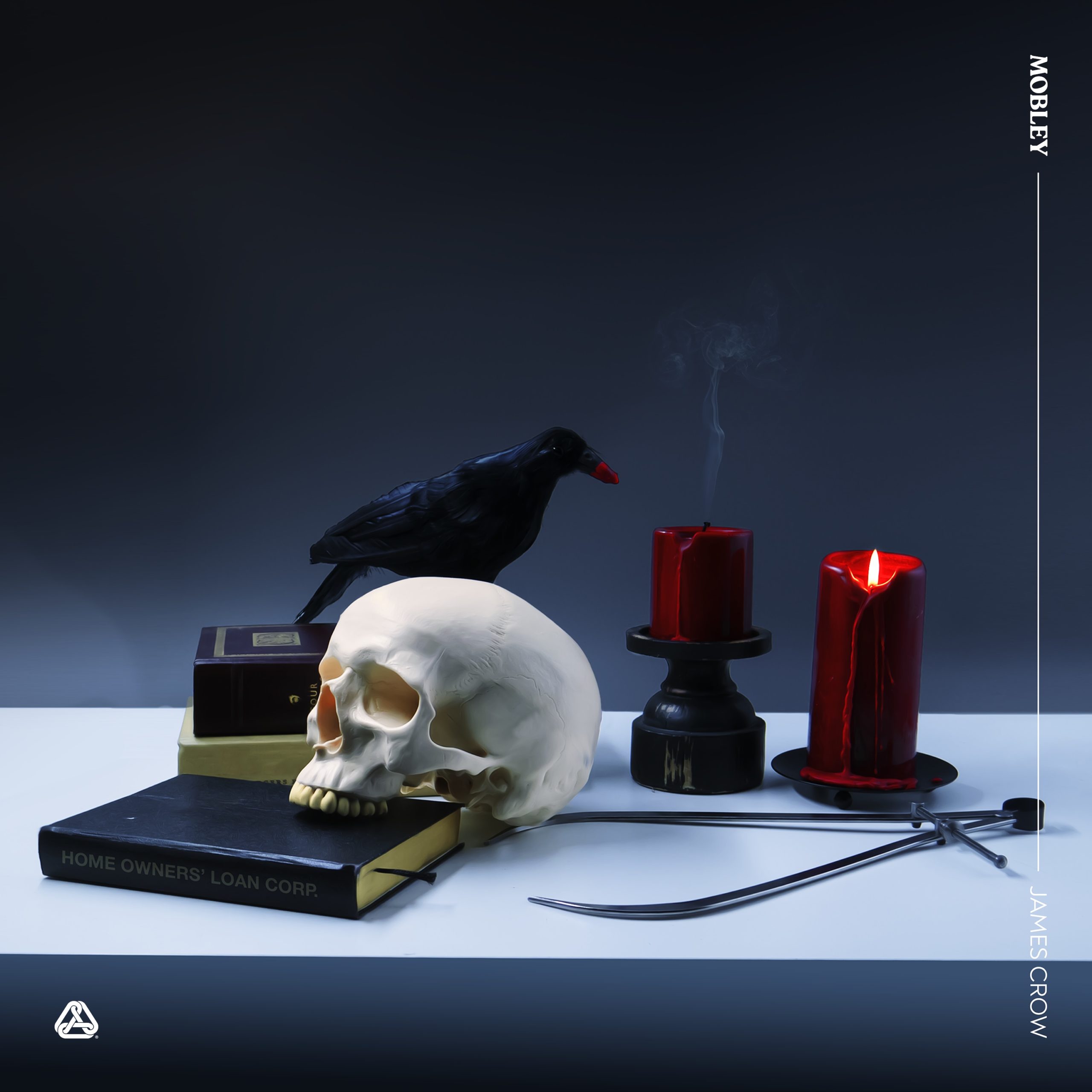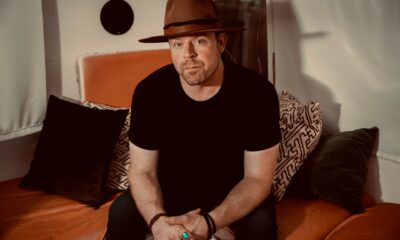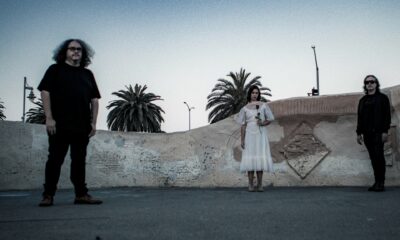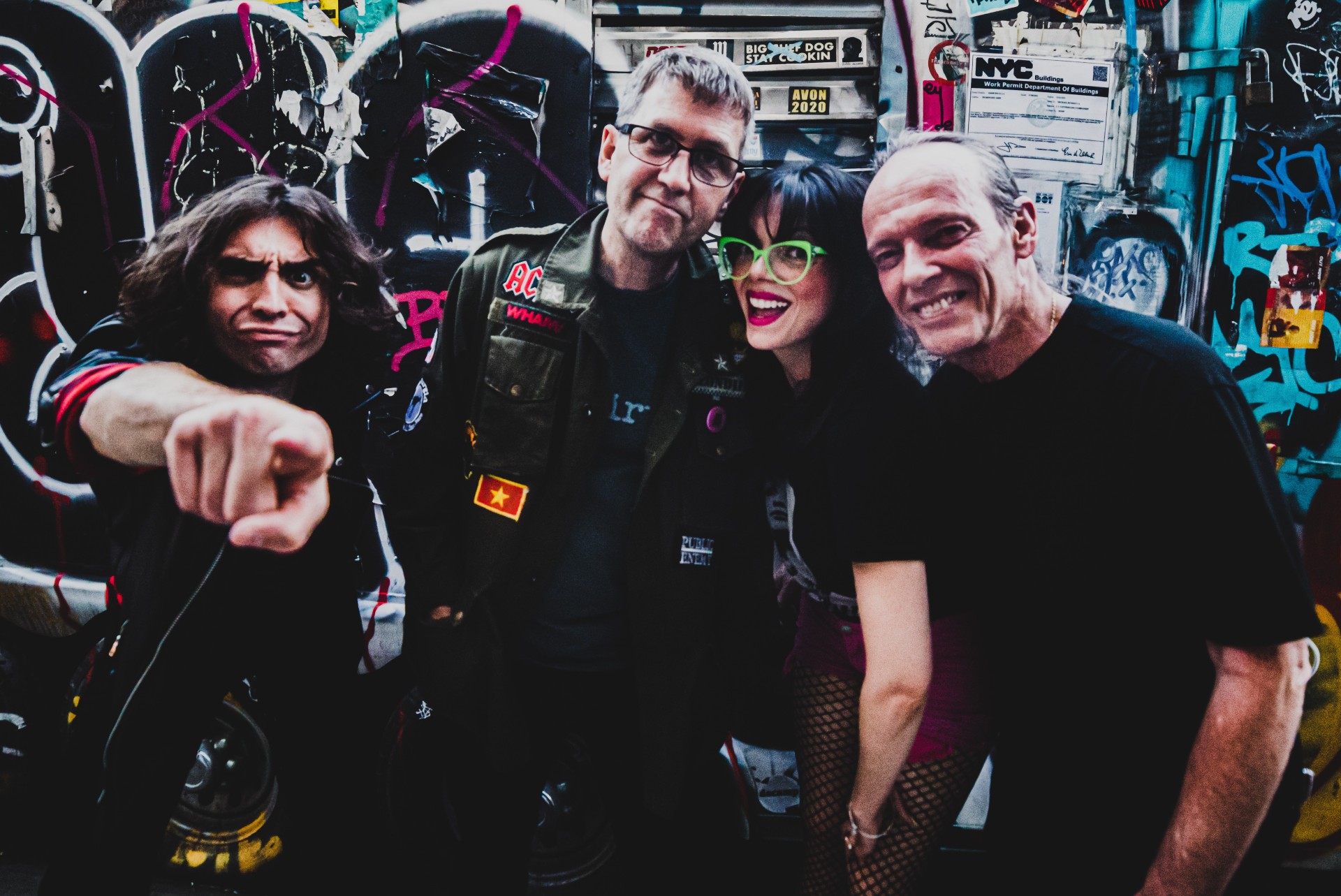Alternative/Rock
Mobley Takes Us Behind-The-Scenes of His Music Video for the Incredible Single, “James Crow” [Premiere]

Texas artist Mobley is giving us an ultra-exclusive look behind-the-scenes of the shoot for his latest music video for the incredible single, “James Crow.” This is Mobley’s latest track, a powerful song centred around his experiences with racial injustice living as an African American in the Southern United States. “James Crow,” picks up where his last single “Nobody’s Favorite” left off, with Mobley and his heroine fleeing from a scary, secret-society mansion.
Recently, we spoke at length with Mobley about the crossover between “James Crow” and the video, the concept for the video, and what his general views are towards making videos. It’s an interesting and fully transparent look into an artist’s creative process and how the clip for “James Crow” fits into a larger film and narrative that will continue with the release of Mobley’s brand new EP, Young & Dying in the Occident Supreme in February, via Last Gang Records.
Young & Dying in the Occident Supreme comes as something of an unexpected release for the singer and guitarist. His intention was not to release new music in 2021, but inspiration soon overcame him while on vacation in Thailand. After a busy 2018, which included festival appearances at Lollapalooza and Austin City Limits, and opening sets for Cold War Kids, Phantogram, and Bishop Briggs, he, on a whim, decided to book a trip to Thailand for some r&r. It was only a day or two before he passed a music shop and spotted a knockoff Fender Telecaster for about 100 dollars which he decided to buy. It wasn’t long after that he found himself writing an album, a musical critique of Western supremacy, a theme that felt all the more relevant being in a totally different country on the other side of the world.
Now, without further adieu, here is our lengthy conversation with Mobley as we go behind-the-scenes of his new music video.
Any mishaps on set?
Mobley: “Yes. Not many, but we did have one kind of major mishap. The video was being shot in Austin at this bar/restaurant called Watertrade + Otoko, attached to the South Congress Hotel. To set the scene in the bar area, I thought it would be cool to have some haze. I stipulated to the rental company that it needed to be water-based, but I did not have the time or bandwidth to check up on that. So we ran it most of the day without any problems, but in the afternoon, when we had almost wrapped up the shoot, the fire alarm went off, and as I understand it, the entire hotel had to be evacuated which was, needless to say, quite embarrassing for me. I was profusely apologetic to the hotel staff and everyone, and to their eternal credit, they were all extremely gracious about it and forgiving, and we moved on without any further incident. But yeah, that was definitely a big mishap.”
Any concepts where you started and, midway through, thought what “The fuck are we doing?”
“I have had that happen on other video shoots, certainly, but on this video shoot I was really meticulous in working out all the details, with my assistant director, Brooke, in particular. We walked through the space, drew up a diagram, had a whole plan for the way it would work and, as far as I recall, everything that I had envisioned and everything I had written ended up in the final shoot. Honestly, basically nothing was left on the cutting-room floor. We shot extremely efficiently, which you have to do when you have a shoestring budget and very little time.”
If money was no issue what would be in your perfect video?
“This is my first record with Last Gang Records, so now I have small budgets to work with, but they’re certainly not ‘money-is-no-object’ budgets. I’d say it’s a small step up from being completely independent, and of course I’m very appreciative of that, and working with them has been great. But, I actually kind of like the ways in which having limitations forces me to do my videos with a working-class mindset; I like approaching things that way. So this is kind of a cheating answer, but if money were no object, I would make a video where I was just giving lots of money away to people who needed it, and that would be how I spent most of the budget.”
If you could have any guest appear in your video who would you have?
“Certainly some actor… probably Denzel Washington, I think. He’s good in everything, so even if I gave him a bad script he’d be good in it.”
How does the music inform the video in terms of visuals matching sound?
“The ‘James Crow’ video is a part of a larger film, and so on this record I really wanted the film to kind of be this physical embodiment, this physical incarnation of the sonic world that I was trying to create. It was a pretty direct influence on the visual style of the film: I was trying to make references that were contemporary to the musical references that I was making in the music. Since I am really heavily involved in writing and directing my videos, I usually am conceiving of the visuals for a song even as I’m writing. So, even if it’s not some sort of direct visual representation where I sing ‘a man raised his hand’ and a man raises his hand, typically it’s not going to be that tightly linked, but the processes are integrated, so the look is heavily influenced by the sound, for sure.”
Do you prefer writing a video around the theme of a song or just going in a warehouse and banging out a live performance?
“Kind of a mix of the two, I guess I would say. The way I work when I’m making my videos is actually not unlike the way I make my songs. I kind of have a pile of ideas that are just waiting to be used, and every time I need a video I dig into that bag of ideas and it’s like, Well, does this go with this song? No, ok, well how about this one? Oh yeah, these could go together if I trim this bit, etc., and that was certainly the case with the ‘James Crow’ video. I had been wanting to shoot a video in that space since I’d first seen it: it’s just such an interesting and unique space. So every time it came time to make a video, I’d try to figure out if there was a way to make it work with the location.
And when it came time to do the ‘James Crow’ video, I knew I wanted to do a heist video and having it confined to a small space was going to be necessary for budgetary and storytelling reasons, so this seemed like the perfect setting. So I kind of came up with the idea in conversation with both the song and the space.
So yeah, I like to plan, I like to write, but when I can I also like to do a fair amount of improvising. The tolerances on this one were pretty tight, so I didn’t get to do much improvising, but that’s typically a pretty big part of what I do. In fact, on the preceding ‘Nobody’s Favorite’ video, the first single from the forthcoming EP, I had a loose plan I would say that I discussed with the rest of the crew, but that video was almost entirely improvised. And we were shooting on film, so we only had about eleven minutes to shoot a four minute video, which is a very, very tight shooting ratio. So yeah, in summary, I like to do both.”
Tell us about any good, bad or crazy director or film crew-related incidents.
“Well, I direct my videos, so I don’t tend to think of anything I do as being either too good, bad, or crazy. I try to be pretty level-headed and helpful, available. I would say it was mostly good, nothing crazy and nothing too bad, everybody just really showed up. You know, most of the crew and cast were amateurs, and they were really professional and really came through. We had some seasoned actors leading the way and I think they set a great example. The DP, co-director, assistant director, and the grip all had a lot of experience, so we were kind of the core group and really pulled together.
I would say a good-crazy experience was that I was very firm on wanting to shoot it all in one take, and I wanted to do the thing where time slows down in the middle, during the bridge. I think, rightly and reasonably, a couple of people in the crew were questioning, Is this really going to be possible? I don’t know, it doesn’t really feel like we’re going to be able to get this. And I was just like, let’s try it a couple of times, see how it feels. We walked through it once and it was rough, then a second time and it was a little better, then the third time we figured it out and everything worked. Everyone in it, from that moment on, was on the same page and moving as a coordinated unit. So that was a really cool thing: that everybody was so willing to get in it and submit our time and talents to this greater whole we were trying to create, and I think the final product really shows that.”
Have you ever had such a baller idea for a music video that you’ve written music for it?
“No, not as such. Like I said, though, I keep a bag full of music video ideas and I’m always trying to figure out ways to match them to songs. So I guess, in a certain sense, I am always writing songs to try to match with music video ideas that I’m really taken with.”
What is your favourite childhood music video and have you any secret nods to it in your catalogue?
“Man, so I didn’t have TV as a child, so I didn’t really see a lot of music videos until late in my teenage years. You know what, the first one that made a really big impression on me is ‘The Scientist’ by Coldplay. It’s the video where Chris Martin is walking backwards through the whole video and the narrative is being told in reverse. It kind of has the quality of a magic trick where you are looking at it and you’re like, How is this working? And as so many magic tricks depend on you not guessing that somebody would do all of the work that it takes to pull off the trick, in the case of that video, you know, it was Chris Martin memorizing how to make the face shapes to sing the song backwards.
And so that really captured my imagination and expanded my idea of what a music video could be. I guess the one way in which I have a nod to it is in my video to my song ‘Swoon,’ which is also kind of an homage to the Radiohead video for ‘No Surprises.’ I kind of, well, I guess I literally turned the concept for that video on its head, in that I am hanging upside down into a fish tank and as it fills up with water, I’m singing the song. So Coldplay reversed their video, and I guess my kind of nod to that was to turn a Radiohead video upside-down.”
How important are music videos in terms of increased exposure?
“Anecdotally, I know they are very important, and I strongly get the sense that that’s true. I know that a lot of my own music discovery comes from music videos, and they say music videos are more shareable, have more virality. I am someone who tries to avoid digging too deeply into the analytics on everything; I’m a very detail-oriented person, so I could get lost in that if I went too deep into it. It’s one thing I sort of choose to believe the experts on, when they tell me that music videos are important for increasing exposure.”
How important of a role does social media play for sharing videos and increasing exposure?
“Same answer, I think. I believe they are important, but I don’t know that I could state empirically that that is a fact.”
How much more effective or beneficial would you say is creating a music video now compared to 20 or 30 years ago?
“I would imagine it was both more difficult and more effective to make music videos 20 to 30 years ago, like, one as a result as the other. Because it was more difficult, there were fewer of them, and because there were fewer, they were more effective at commanding attention. The democratization of all those tools, video production, sound production, music making, all those things, has obviously increased the mass of people who are participating in all of those artforms. In its own way that is certainly a wonderful thing, but it does make it harder to cut through the noise, I believe.”
Are the benefits worth the costs and effort involved?
“That’s the eternal question of art. I try to look at everything I make as art. I know that videos are about marketing as well, but I try to approach them as pieces of art and to make things that I enjoy watching, enjoy having other people watch, and that I’m proud of. So as long as that’s the case, whether it does its job as a marketing piece or not, then yeah, I think it’s worth it. Art is a vital part of who we are as a species, so yeah, I think it is worth it.”
Is YouTube (or ‘online-only’ platforms) a good enough platform by itself to justify creating a music video?
“You know, these are all complicated questions. But I think YouTube is pretty good at helping bring niche audiences in contact with niche creative people or figures, whatever, video makers, broadly speaking. I routinely watch videos of some kid in the middle of America doing science experiments for 20 minutes, and I wouldn’t have known that I was interested in that until I saw it on YouTube. So in that sense, yeah, it’s probably worth it.”
Is a well-made DIY video just as good or beneficial as a professionally-made/directed video?
“Absolutely. I think a well-made DIY video is, more often than not, better than a well-produced, professionally made video, because I think that people have that parasocial connection with the people who made the video, a sense of, ‘Oh, they made that themselves.’ I think there is a kind of depth of connection that you can get from that that you can’t actually get when it’s like, ‘Oh yeah, they hired really talented people and made a really incredible video.’ Obviously the converse is also true; there are things you can get with amazing production values that you just can’t get if you don’t have baseline access to that stuff, but I do think that there are unique benefits to a well-made DIY video, for sure.”
Can you elaborate more on the video’s concept?
“As I said, it’s Part II of a larger film, so Part I was the music video for my lead single, ‘Nobody’s Favorite.’ In that video, my character finds himself in a strange mansion, in a surreal situation where he keeps on waking up in the foyer of the mansion, wandering through it, finding these instruments, and trying to figure out what he needs to do to escape. At the end of the video, he is saved by a woman who comes and breaks him out. So this video, Part II for my latest single ‘James Crow,’ picks up where that video left off, and shows the woman, the hero, and my character teaming up with this crew to pull a heist on the villains from the first video. They’re stealing this powerful object from the villains.
Metaphorically, that was meant to be a stand-in for the idea of this multi-gender, multi-racial coalition of people coming together to seize power from powerful, rich, racist people who disproportionately have a say in how the country I’m in, the U.S., and how the larger world get run.”
In terms of the crew you worked with, who did it include and how did you put together the team?
“I did work with a small crew. Through the label, I linked up with a UK-based company called Cape Films, and James Ayling from Cape Films co-directed this with me. My tour manager and front-of-house engineer also assistant-directed on the video. James connected me with Brody Carmichael, who is a cinematographer; Brody brought along fellow filmmaker Emily Basma, who was the grip and AC. That was the whole crew for the video, and then I also got some help from my management team. It was kind of a motley crew, but we pulled it together and I’m really proud of what we were able to make.”
Did the video have a budget and were you able to stick to it?
“Yes, it did have a budget, and yes I actually came in under-budget, slightly. Was slightly over-budget on another one, and was able to make that up by being slightly under-budget on this one. So yes, I’ve got a lot of practice. A lot of practice making videos with no money. So that was a useful skill.”
Just how much of the new video was self-made? Were you involved in other aspects of the creative process?
“So as I said, I wrote and directed it. Along with my management team, I did the location scouting, the casting, reached out and found the on-camera talent, props, art direction, all of that, so a lot of it. Most of it, I guess, which is kind of our M.O. around here, we do as much as we can in-house.”
-

 Music4 days ago
Music4 days agoTake That (w/ Olly Murs) Kick Off Four-Night Leeds Stint with Hit-Laden Spectacular [Photos]
-

 Alternative/Rock5 days ago
Alternative/Rock5 days agoThe V13 Fix #010 w/ High on Fire, NOFX, My Dying Bride and more
-

 Hardcore/Punk2 weeks ago
Hardcore/Punk2 weeks agoHastings Beat Punks Kid Kapichi Vent Their Frustrations at Leeds Beckett University [Photos]
-
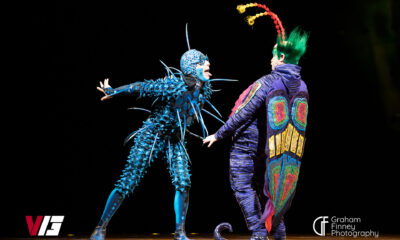
 Culture2 weeks ago
Culture2 weeks agoCirque Du Soleil OVO Takes Leeds Fans on a Unique, Unforgettable Journey [Photos]
-

 Alternative/Rock2 weeks ago
Alternative/Rock2 weeks agoA Rejuvenated Dream State are ‘Still Dreaming’ as They Bounce Into Manchester YES [Photos]
-

 Features4 days ago
Features4 days agoTour Diary: Gen & The Degenerates Party Their Way Across America
-

 Culture1 week ago
Culture1 week agoDan Carter & George Miller Chat Foodinati Live, Heavy Metal Charities and Pre-Gig Meals
-

 Music6 days ago
Music6 days agoReclusive Producer Stumbleine Premieres Beat-Driven New Single “Cinderhaze”

